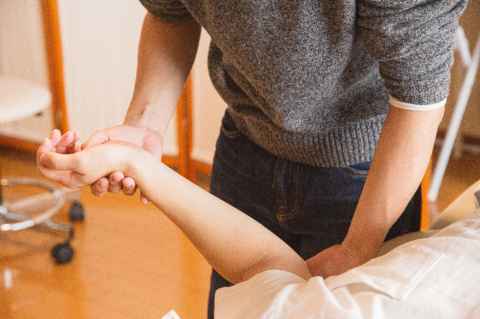Rehabilitation and return to work
Find out more about rehabilitation and return to work following an injury.

What is rehabilitation?
Rehabilitation may be defined as the process whereby a person who has suffered personal injury regains or acquires the skills necessary to optimise physical, mental, vocational and social functionality.
The Accident Compensation Act 2001 requires the individual to take responsibility for their own rehabilitation and the legislation is clear that the employer does not accept sole responsibility. The role of the employer is to help facilitate the rehabilitation process.
Objectives of rehabilitation
Our objectives are:
- To have a positive impact on employee relations, morale and the self-esteem of injured employees, by supporting them in an early return to work
- To minimise work accident injury costs through early intervention and managed return to work programmes
Each person’s injury and circumstance will be unique and their Wellnz Case Manager will develop a specific individual rehabilitation plan (IRP) with the injured person (and other parties involved in the recovery) to assist in identifying the:
- Injured person’s entitlement to rehabilitation
- Desired long-term case management outcomes for a particular case
- Immediate case management objectives
- Specific actions needed to achieve the outcome and objectives
Regular meetings will be held to discuss the IRP plan, update it or address any concerns.
However, the Wellnz Case Manager can be contacted at any time to review these.
Entitlements
| Type | Examples |
|---|---|
| Medical | Visits to the GP, physiotherapist, specialist, X-ray or surgery |
| Social | Help at home, personal care, equipment to support independence. Home help, Child care, Attendant care, Aids/ Appliances, Transport to treatments |
| Return to work | Workstation assessment and a graduated return to work plan under Occupational Therapist (OT) supervision. Transport arrangements |
Rongoā Māori: Frequently Asked Questions for Accredited Employers and Third-Party Administrators
-
Document Description: This document addresses frequently asked questions (FAQs) from Accredited Employers (AEs) and Third-Party Administrators (TPAs) about the rongoā Māori service at ACC
Return to work
The employee’s line manager is responsible for developing an appropriate list of alternative duties for staff returning to work following an injury. In assessing the appropriate alternative duties, the employer representative and injured employee will take into account:
- The types of alternative duties available
- The skills of the injured person
- Any medical restrictions
- Any special aids required
- Any potential hazards
- Consultation with all stakeholders has occurred
In certain cases an occupational therapist can be engaged to assist with this process to provide independent expert guidance. This can be discussed with the Health, Safety and Wellbeing Manager and the Wellnz Case Manager. Contact details: The work injury claim process.
A gradual return to work programme may be initiated to ease the injured staff member back into the workplace. Due to the nature of injury, pain, discomfort, incapacity and the length of time absent, it is sensible and practicable to ease back into the work environment in a controlled manner.
Vocational independence
Sometimes, due to the injury and incapacity of the injured person, it is not feasible or medically sustainable for a person to return to their pre-injury role.
Where this situation arises, a decision may be made to start the vocational independence process.
The process
This comprehensive process assesses what future work roles the injured claimant can undertake based on their skill levels and medical/injury capacity. It also identifies whether the person is fit for work or requires additional skill sets to achieve vocational independence.
Document Control
Version: 2.0
Last Updated: Jul 2025
Next Review: Jul 2026
Owner: hsw@auckland.ac.nz
Approver: Associate Director, Health Safety & Wellbeing